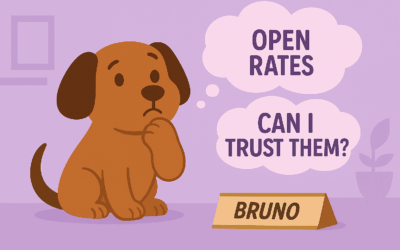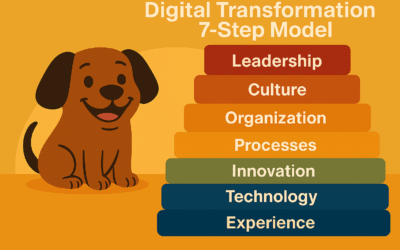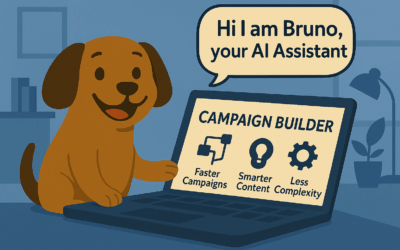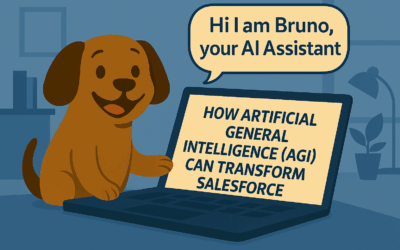Crafting the Perfect Product-View Journey in Marketing Cloud
A product-view journey is one of the most nuanced lifecycle campaigns in modern e‑commerce. When someone clicks through to a product detail page but leaves without purchasing, they’re broadcasting intent but also friction or uncertainty. In Salesforce Marketing Cloud, you can capture this micro‑behavior and transform it into an opportunity to nudge the customer toward conversion with value, not spam. This post will guide you through building a sophisticated product-view journey that follows a product-detail view with no conversion, offering related items, personalized recommendations, and targeted reminders.
Why Product‑View Journeys Matter
Product view signals intent stronger than a homepage visit but weaker than a cart add. By reacting to this middle‑of‑the‑funnel event, brands can:
- Provide relevant content that answers questions and overcomes objections.
- Surface complementary or alternative products that might better fit the shopper’s needs.
- Increase brand recall and reduce the likelihood of the customer forgetting about the product.
- Encourage exploration across categories, driving cross‑sell opportunities.
Ignoring these signals leaves revenue on the table; acting on them shows customers that you care about their browsing experience.
Simple Setup: Capture and Remind
Starting simple ensures that you get the basic components of this journey right before layering on advanced tactics. Here’s a straightforward framework:
- Trigger: Set up a behavioural event that records each product detail view. Use a data extension or event API to capture product ID, timestamp, and customer identifier. Filter out sessions that convert within a defined window (for example, one hour).
- Initial Reminder: Within a few hours of the view (but not before the customer has had a chance to purchase on their own), send a friendly email reminding them of the product. Include high‑quality imagery, a concise description, and a clear call to action. Emphasize benefits and availability.
- Related Product Recommendations: Use a dynamic content block or Einstein Product Recommendations to populate a carousel of items similar to the viewed product. These could be complementary accessories, alternative colours, or popular items from the same category. The goal is to widen the consideration set without overwhelming the customer.
- Follow‑Up: If the customer still doesn’t convert, send a second touchpoint a day or two later. This message can highlight reviews, user‑generated content, or limited‑time incentives. Avoid excessive discounts at this stage; focus on value and trust signals.
- Exit Conditions: Always include exit criteria so that anyone who purchases or adds the item to their cart stops receiving reminders. This prevents fatigue and ensures a seamless customer experience.
Advanced Journey: Multi‑Channel and AI‑Driven Personalization
Once your basic product‑view journey is live, you can enhance it to address various segments and preferences:
- Multi‑Channel Outreach: Not everyone responds to email. Use Journey Builder to orchestrate SMS, push notifications, or in‑app messages. For example, send a push notification via your mobile app with a one‑click link back to the product page or a limited‑time offer.
- Predictive Segmentation: Leverage Einstein Engagement Scoring to segment customers based on their likelihood to engage or convert. High‑propensity shoppers might receive bolder cross‑sell suggestions, while low‑propensity ones receive educational content to build trust.
- Personalized Timing: Use send time optimization to deliver messages when each individual is most likely to open them. This ensures your product suggestions land at the top of their inbox or home screen.
- Category‑Level Journeys: For customers browsing multiple products within a category (e.g. running shoes), design a parallel journey that highlights best‑sellers, new arrivals, and customer favorites in that category. This broadens their discovery without being repetitive.
- A/B Testing: Continuously test subject lines, creative layouts, and recommendation logic. Compare the performance of “similar items” vs. “frequently bought together” suggestions. Use the results to refine your algorithm.
Measuring Success: KPIs for Product‑View Journeys
To optimize your journey, monitor these key performance indicators:
- Open Rate & Click‑Through Rate: These basic engagement metrics tell you whether your reminders are resonating.
- Conversion Rate: Track how many recipients purchase the originally viewed product or any recommended item after receiving the journey.
- Time to Purchase: Measure the average time between product view and conversion; a successful journey should shorten this window.
- Cross‑Sell Uptake: Evaluate how often customers purchase a related item featured in your recommendations.
- Revenue per Recipient: Compare incremental revenue generated by the journey against a control group to assess its true impact.
Technical and Schema Considerations
Behind the scenes, a robust product‑view journey relies on clean data and proper integrations:
- Ensure that your e‑commerce platform or web analytics solution sends product view events to Marketing Cloud in near real‑time. Use server‑side tracking to avoid issues with ad blockers.
- Store event data in a well‑structured data extension with product attributes (name, price, category) to facilitate dynamic content.
- When embedding images or adding an image block to your emails, always include alt text containing your focus keyphrase, such as “Product View Journey Salesforce Marketing Cloud logo,” to improve accessibility and SEO signals.
- In WordPress, use the Yoast Schema tab to set the schema type to Article. This helps search engines understand your content and can improve rich results.
The Payoff: Turning Browsers into Buyers
A thoughtful product‑view journey is not just a nudge — it’s a conversation. By responding to browsing behaviour with timely, helpful recommendations, you demonstrate empathy and expertise. Customers feel that your brand understands their tastes and helps them discover products they might love. Over time, this builds trust and loyalty, encouraging repeat visits and purchases.
For inspiration on similar lifecycle campaigns, read our articles on the VIP loyalty journey (https://eksido.com/crafting-the-perfect-vip-loyalty-journey-in-marketing-cloud/) and on favorite-triggered journeys (https://eksido.com/crafting-the-perfect-favorite-triggered-journey-in-marketing-cloud/) — they illustrate how to reward high-spend customers and re-engage visitors who add items to a wishlist.
For more ideas on product recommendation strategies, explore this comprehensive guide on recommendation emails: https://www.omnisend.com/blog/product-recommendation-email/.



